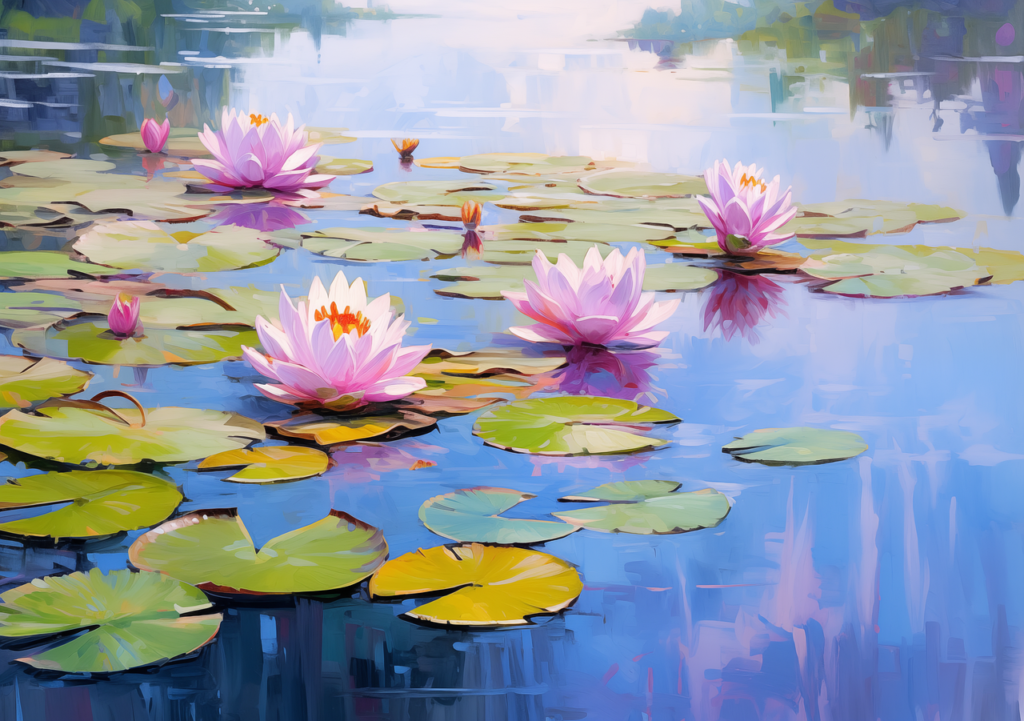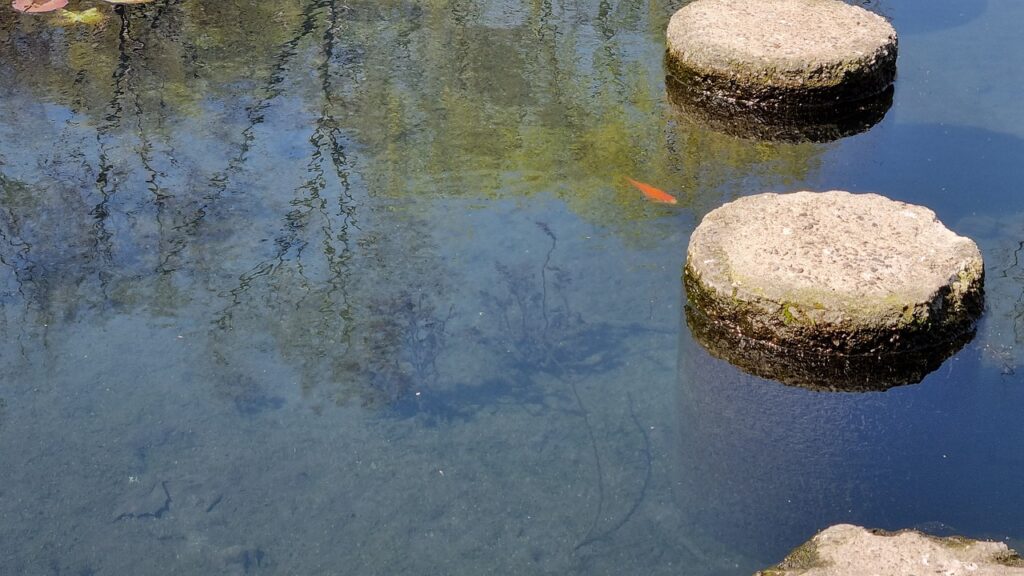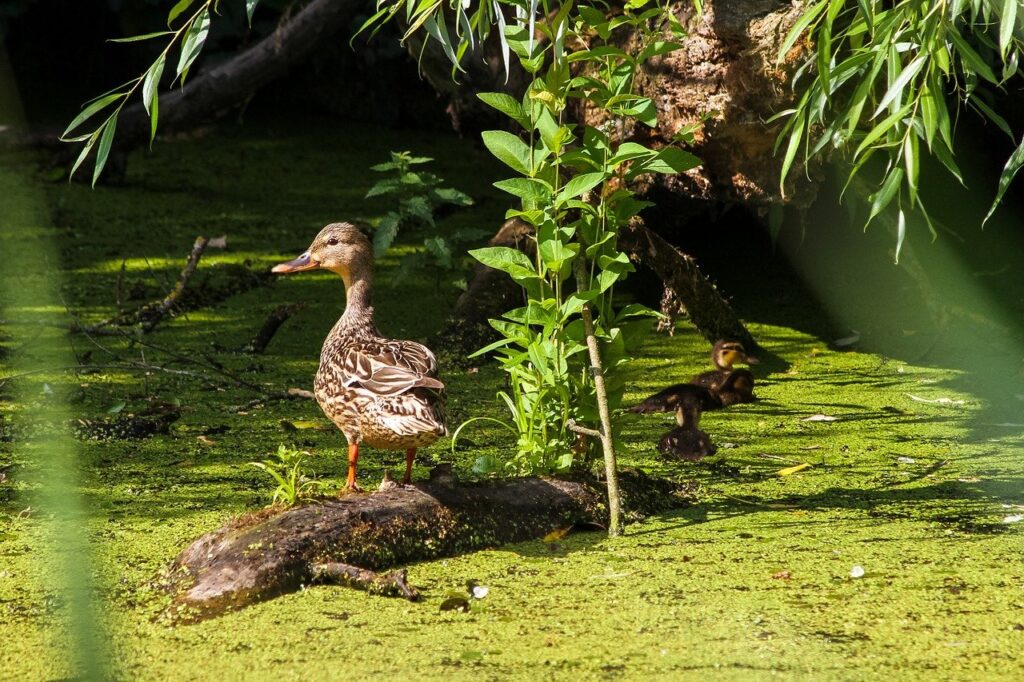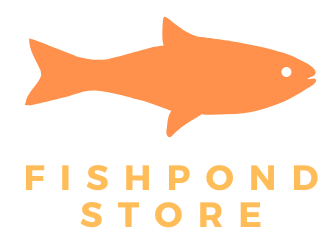I’ve always been fascinated by the delicate balance of nature, and nothing showcases this better, than the mesmerizing world of fish ponds. Today I’ll share some insight into what types of fish are good for a low oxygen pond, and talk about the incredible fish species that can not only survive but also thrive in such conditions.
Understanding Low Oxygen Ponds
Definition of a low oxygen pond
A low oxygen pond, also known as a hypoxic pond, is a body of water that lacks sufficient dissolved oxygen to support a healthy aquatic ecosystem. Oxygen is vital for the survival of fish and other creatures in a pond as they rely on it for respiration. In a low oxygen pond, the oxygen levels have become depleted, leading to potentially harmful consequences for the pond’s inhabitants.
Causes of low oxygen in ponds
There are several factors that can contribute to low oxygen levels in ponds. One common cause is excessive organic matter, such as decaying leaves or algae, which consumes oxygen during decomposition. Additionally, overstocking the pond with fish, or an imbalance between fish population and available resources, can lead to low oxygen levels.
Other factors include excessive nutrient runoff into the pond, poor water circulation, and warm water temperatures, which reduce the water’s ability to hold oxygen.
Implications of low oxygen levels in ponds
Low oxygen levels can have significant implications for the health and overall balance of a pond ecosystem. Fish and other aquatic organisms may experience stress or suffocation in oxygen-deficient environments, leading to weakened immune systems, reduced growth rates, and increased susceptibility to diseases.
Low oxygen levels can also result in the depletion of beneficial microorganisms that play a crucial role in breaking down organic matter and maintaining water quality. Additionally, low oxygen conditions can promote the growth of harmful bacteria and algae, further disrupting the ecological balance of the pond.
Importance of Choosing Fish for Low Oxygen Ponds
Adaptability to low oxygen conditions
When it comes to stocking a low oxygen pond, choosing fish species that are adaptable to low oxygen conditions is crucial. Some fish have evolved to thrive in oxygen-deficient environments and can tolerate and adapt to fluctuations in oxygen levels. These fish are better equipped to cope with poor oxygenation, ensuring their survival and overall well-being in a low oxygen pond.
Ability to survive with less oxygen
Certain fish species have the remarkable ability to survive with lower oxygen levels than others. These species have unique physiological adaptations that allow them to extract oxygen more efficiently from the water or even breathe atmospheric oxygen when oxygen levels in the water are scarce. By selecting fish with a natural ability to survive with less oxygen, pond owners can ensure the long-term viability of their aquatic inhabitants.
Tolerance to fluctuating oxygen levels
Fluctuating oxygen levels can be common in low oxygen ponds, especially during warmer months or periods of poor water circulation. Fish species that have a high tolerance for changes in oxygen levels are better suited for these conditions. These fish can withstand temporary decreases in oxygen and quickly adapt to fluctuations, preventing potential stress or harm to their health.

Recommended Fish Species for Low Oxygen Ponds
There are various fish species that are well-suited for low oxygen ponds due to their adaptability, ability to survive with less oxygen, and tolerance to fluctuating oxygen levels. Here are some recommended fish species:
Koi Fish
Koi fish are popular choices for low oxygen ponds due to their ability to thrive in a variety of conditions. They can tolerate low oxygen levels and have a high tolerance for fluctuations in oxygen levels, making them well-suited for ponds with poor aeration. Koi fish are also known for their beauty and vibrant colors, making them a visually appealing addition to any pond.
Goldfish
Goldfish are another excellent choice for low oxygen ponds. They are hardy fish that can adapt to a wide range of water conditions, including low oxygen levels. Goldfish are also known for their ability to survive in shallow waters, making them suitable for ponds with limited depth. With their bright colors and graceful movements, goldfish can add visual interest to a low oxygen pond.
Mosquito Fish (Gambusia)
Mosquito fish, also known as Gambusia, are small freshwater fish that are highly adaptable to low oxygen conditions. They have the unique ability to breathe atmospheric oxygen, allowing them to survive in oxygen-deficient environments. Additionally, mosquito fish are voracious eaters of mosquito larvae, making them valuable in controlling mosquito populations in ponds.
Fathead Minnows
Fathead minnows are a species of small fish that can thrive in low oxygen ponds. They have a low metabolic rate, allowing them to survive with less oxygen than some other fish species. Fathead minnows also have a high tolerance for fluctuating oxygen levels, making them resilient to changes in pond conditions. These minnows are commonly used as forage fish, providing a food source for larger predatory fish.
White Cloud Mountain Minnows
White Cloud Mountain minnows are small, peaceful fish that can adapt well to low oxygen ponds. They are native to mountain streams, which often have oxygen-deficient conditions. This natural adaptation enables them to survive and thrive in ponds with low oxygen levels. White Cloud Mountain minnows are known for their vibrant colors, making them an attractive choice for pond enthusiasts.
Paradise Fish
Paradise fish, also known as Macropodus opercularis, are hardy fish that can tolerate low oxygen levels. They have labyrinth organs, which allow them to breathe atmospheric oxygen. This adaptation enables paradise fish to survive in ponds with inadequate oxygenation. With their beautiful fins and distinctive coloration, paradise fish can be a captivating addition to a low oxygen pond.
Weather Loach
Weather loaches, also known as Dojo loaches or Misgurnus anguillicaudatus, are unique fish that possess the ability to breathe atmospheric oxygen. This adaptation enables them to survive in oxygen-deficient environments, making them suitable for low oxygen ponds. Weather loaches are known for their eel-like appearance and playful nature, making them an intriguing addition to any pond.
Hillstream Loach
Hillstream loaches, such as the Gastromyzon spp. and Sewellia spp., are well-adapted for low oxygen ponds. They are native to fast-flowing, oxygen-poor streams and have a flattened body shape that allows them to cling to rocks and surfaces in swiftly moving currents. This adaptation enables hillstream loaches to extract oxygen efficiently from the water and survive in low oxygen environments.
Rosy Barb
Rosy barbs, also known as Puntius conchonius, are lively and resilient fish that can tolerate low oxygen levels. They are hardy and adaptable, making them suitable for a variety of pond conditions. Rosy barbs are known for their striking coloration, with males displaying vibrant red and gold hues. These fish can add a vibrant splash of color to a low oxygen pond.
Golden Orfe
Golden orfe, also known as Ide or Leuciscus idus, are large, graceful fish that can thrive in low oxygen conditions. They have a natural ability to survive with less oxygen, making them well-suited for ponds with limited oxygenation. Golden orfe are known for their golden coloration and slender, streamlined bodies. Their elegance and grace make them a popular choice for larger low oxygen ponds.

Characteristics of Fish Suitable for Low Oxygen Ponds
Ability to breathe atmospheric oxygen
Fish species that can breathe atmospheric oxygen have a significant advantage in low oxygen ponds. This ability allows them to extract oxygen from the air when the oxygen levels in the water are insufficient. Fish with labyrinth organs, such as paradise fish and gouramis, are a prime example of this adaptation. By utilizing atmospheric oxygen, these fish can survive and thrive in oxygen-deficient environments.
Resilience to oxygen-deficient environments
Fish species that have evolved to survive in oxygen-deficient environments possess unique physiological adaptations. These adaptations enable them to extract oxygen more efficiently from the water or rely on alternative oxygen sources, such as atmospheric oxygen. Fish with a higher tolerance for low oxygen levels are better equipped to withstand periods of oxygen depletion in a pond, ensuring their survival and well-being.
Low metabolic rates
Fish species with low metabolic rates have a distinct advantage in low oxygen ponds. A low metabolic rate means that the fish requires less oxygen to sustain its bodily functions. This allows them to survive with less oxygen than fish with higher metabolic rates. Fish with lower metabolic rates also have a reduced demand for food, making them more adaptable to environments with limited resources.
Ability to survive in shallow waters
In low oxygen ponds, shallow waters may have higher oxygen levels due to more exposure to atmospheric oxygen. Fish species that can survive in shallow waters are better suited for low oxygen environments. These fish can find refuge in the shallower areas of the pond, where oxygen levels are relatively higher than in deeper areas. By utilizing these shallow areas, fish can enhance their chances of obtaining sufficient oxygen for survival.
Ability to tolerate higher temperatures
Warm water temperatures can contribute to reduced oxygen levels in ponds. Fish species that can tolerate higher temperatures are better equipped to survive in low oxygen ponds, especially during summer months. Some fish, such as the mosquitofish, have a higher tolerance for warmer water temperatures and can adapt well to the challenging conditions of a low oxygen pond.
Considerations for Stocking Fish in Low Oxygen Ponds
Pond size and depth
When stocking fish in a low oxygen pond, it is essential to consider the size and depth of the pond. A larger pond with more water volume has a higher capacity to maintain oxygen levels and support a greater number of fish. Additionally, a deeper pond provides fish with access to cooler water layers that typically contain higher oxygen concentrations.
Oxygenation methods
Implementing oxygenation methods can help alleviate low oxygen conditions in ponds. Aerators, such as air pumps or diffusers, can introduce oxygen into the water, promoting higher oxygen levels. Fountains and waterfalls also enhance oxygenation by increasing water movement and allowing for gas exchange at the water surface. Incorporating these oxygenation methods can improve the overall oxygen levels in a low oxygen pond, creating a healthier environment for fish.
Water circulation
Effective water circulation is essential for maintaining healthy oxygen levels in a low oxygen pond. Stagnant water promotes oxygen depletion and can lead to the accumulation of waste and harmful substances. Installing a circulation system, such as a pond pump or a filtration system with water movement capabilities, enhances oxygenation and helps prevent the buildup of pollutants. Proper water circulation also encourages the distribution of oxygen throughout the pond, benefiting fish and other aquatic organisms.
Plant selection and maintenance
Aquatic plants play a crucial role in oxygenating ponds. They produce oxygen through photosynthesis and also help regulate nutrient levels in the water. Choosing a variety of submerged, floating, and emergent plants can enhance oxygen levels in a low oxygen pond. However, it is important to properly maintain the plants to prevent overgrowth, which can lead to excessive oxygen consumption during decomposition.
Fish feeding practices
Careful consideration should be given to fish feeding practices in low oxygen ponds. Overfeeding fish can lead to increased waste production, which consumes oxygen during decomposition. Monitoring and controlling the amount of food provided to the fish can help mitigate the risk of oxygen depletion. Feeding smaller amounts of food at more frequent intervals can reduce waste production and promote overall fish health while minimizing the impact on oxygen levels.

Fish Species to Avoid in Low Oxygen Ponds
Trout
Trout are cold-water fish that prefer well-oxygenated environments. Low oxygen ponds are not suitable for trout as they require higher levels of oxygen to thrive. The warm water temperatures and reduced oxygen availability in low oxygen ponds can cause stress and lead to adverse health effects in trout.
Catfish
Catfish, including species like channel catfish and blue catfish, are not suitable for low oxygen ponds. They are bottom-dwelling fish that prefer well-oxygenated waters. Low oxygen levels can cause respiratory issues and stress in catfish, making them unsuitable for ponds with limited oxygenation.
Cichlids
Cichlids, such as African cichlids and South American cichlids, are generally not recommended for low oxygen ponds. These fish are known for their high activity levels and require well-oxygenated environments to thrive. Low oxygen conditions can lead to increased stress and decreased overall health in cichlids.
Betta Fish
Betta fish, also known as Siamese fighting fish, are not suitable for low oxygen ponds. They are tropical fish that require warm water temperatures and well-oxygenated environments. Low oxygen levels can negatively impact a betta fish’s health and may lead to respiratory issues or other health complications.
Guppies
Guppies, although popular in aquariums, are not recommended for low oxygen ponds. They are tropical fish that require well-oxygenated waters and warmer water temperatures. Guppies are not equipped to survive in low oxygen conditions and may suffer from stress or suffocation in such environments.
Tropical Fish
In general, tropical fish species that require higher levels of oxygen, specific water parameters, and warmer temperatures are not suitable for low oxygen ponds. These fish are adapted to well-oxygenated and stable tropical environments, making them ill-suited for low oxygen conditions.
Monitoring and Maintaining Oxygen Levels in Ponds
Regular oxygen level testing
Regular testing of oxygen levels in a low oxygen pond is essential for maintaining a healthy environment for fish. Test kits specifically designed to measure dissolved oxygen levels can provide valuable information about the pond’s oxygenation status. Monitoring should be done at different times and locations throughout the pond to account for potential variations.
Aerating the pond
Aeration is a crucial method for maintaining optimal oxygen levels in a low oxygen pond. Air pumps, diffusers, or pond fountains can be used to introduce oxygen into the water. By creating water movement and increasing surface area, these methods enhance oxygen exchange at the water-air interface, helping to mitigate low oxygen conditions.
Addition of water plants
Incorporating a variety of water plants, such as submerged oxygenators or floating aquatic plants, can contribute to oxygenating the pond. These plants produce oxygen during photosynthesis and help maintain healthy oxygen levels. However, it is important to strike a balance with plant growth to prevent overcrowding, which can deplete oxygen during decomposition.
Proper pond maintenance
Maintaining a well-maintained pond is crucial for regulating oxygen levels. Regular removal of decaying leaves, excessive organic matter, and debris reduces the oxygen demand of the pond ecosystem. Preventing the accumulation of waste and maintaining good water quality through proper pond maintenance practices can contribute to optimal oxygen levels in a low oxygen pond.
Avoiding overstocking
Overstocking a low oxygen pond can lead to oxygen depletion and detrimental effects on fish and other aquatic organisms. Fish produce waste that consumes oxygen during decomposition, and an excessive fish population can overwhelm the pond’s oxygen supply. To maintain healthy oxygen levels, it is essential to stock the pond appropriately and consider the pond’s capacity to support the fish population.

Other Factors to Consider for a Healthy Pond Environment
Water quality parameters
In addition to oxygen levels, maintaining proper water quality parameters is essential for a healthy pond environment. Factors such as pH, ammonia, nitrite, and nitrate levels should be monitored regularly. Unbalanced water chemistry can stress fish and lead to health issues. Regular water testing and appropriate water treatments, if necessary, can help maintain optimal pond conditions.
Temperature regulation
Water temperature plays a critical role in oxygen availability. Higher water temperatures reduce the water’s ability to hold oxygen, potentially exacerbating low oxygen conditions. Establishing shade, such as floating plants or strategically placed trees, can help regulate water temperature and prevent excessive heating in a low oxygen pond.
Proper filtration systems
A well-designed filtration system is vital for maintaining water quality in a low oxygen pond. Filtration systems remove excess nutrients, waste, and harmful substances, preventing their accumulation and reducing oxygen demand. Biological filters, mechanical filters, and UV sterilizers are commonly used components in pond filtration systems and contribute to a healthy pond environment.
Avoiding excessive organic matter
The accumulation of excessive organic matter, such as decaying leaves or algae, can significantly impact oxygen levels in a low oxygen pond. Organic matter consumes oxygen during decomposition, leading to oxygen depletion. Regular removal of decaying organic matter and proactive steps to minimize excessive plant growth can help prevent oxygen deficiencies.
Avoiding chemical pollutants
Chemical pollutants, such as pesticides, herbicides, or fertilizers, can negatively impact the health of a low oxygen pond. These substances can harm fish and other aquatic organisms and disrupt the delicate balance of the pond ecosystem. Avoiding the use of unnecessary chemicals around the pond and opting for environmentally friendly alternatives can contribute to a healthier pond environment.
Potential Benefits of Fish in Low Oxygen Ponds
Algae control
Fish play a vital role in controlling algae growth in ponds. Algae blooms are common in low oxygen environments, and excessive algae can deplete oxygen levels further. Certain fish species, such as goldfish and koi, consume algae and help keep its proliferation in check. By reducing algae growth, fish contribute to maintaining healthier oxygen levels in low oxygen ponds.
Mosquito population control
Mosquitoes can be a nuisance and a health concern in ponds, especially in low oxygen environments. Mosquito larvae require oxygen-rich water to survive, and fish species like mosquito fish actively feed on mosquito larvae, effectively controlling their population. By reducing the mosquito population, fish contribute to the overall health and comfort of a low oxygen pond.
Visual appeal and relaxation
Fish add visual appeal to a low oxygen pond, enhancing its aesthetic value. Watching fish swim gracefully in the water can provide a sense of tranquility and relaxation. The vibrant colors and graceful movements of certain fish species, such as koi or goldfish, can create a visually captivating and serene pond environment.
Aquatic ecosystem balance
Fish contribute to maintaining a balanced ecosystem in a low oxygen pond. They form part of the food chain and interact with other aquatic organisms, such as insects and plants. By consuming algae, insects, and other small organisms, fish help regulate populations and prevent imbalances that can occur in a pond ecosystem. The presence of fish ensures a more stable and diverse ecosystem in a low oxygen pond.
Nutrient recycling
Fish play a crucial role in nutrient recycling within a low oxygen pond. They excrete waste, which contains essential nutrients like nitrogen and phosphorus. These nutrients are then broken down by beneficial bacteria and utilized by plants as fertilizers. This nutrient cycling process helps maintain the pond’s overall balance and contributes to healthy plant growth.
What Types Of Fish Are Good For A Low Oxygen Pond?
Choosing the right fish for a low oxygen pond is crucial for maintaining a healthy aquatic environment. Fish species that are adaptable to low oxygen conditions, have the ability to survive with less oxygen, and can tolerate fluctuating oxygen levels are recommended for low oxygen ponds.
Following recommended guidelines for stocking fish, monitoring oxygen levels, and maintaining optimal pond conditions enhances fish health and promotes a thriving pond ecosystem. By considering key factors such as pond size, oxygenation methods, water circulation, plant selection, and proper pond maintenance, owners can ensure a visually appealing, balanced, and sustainable low oxygen pond.
